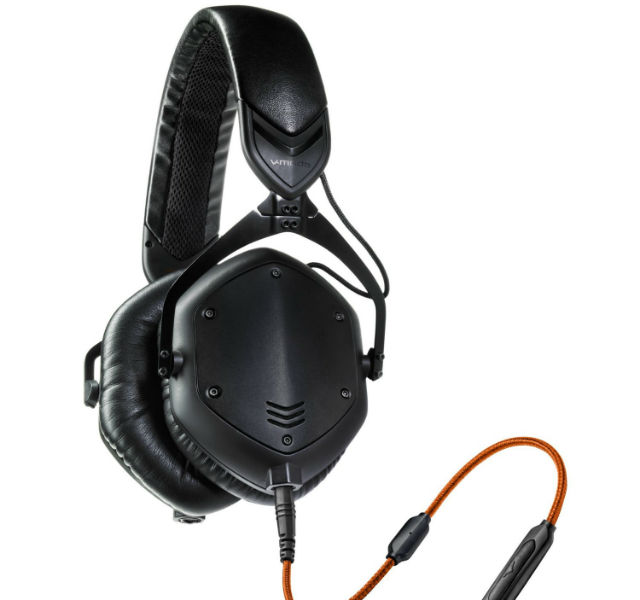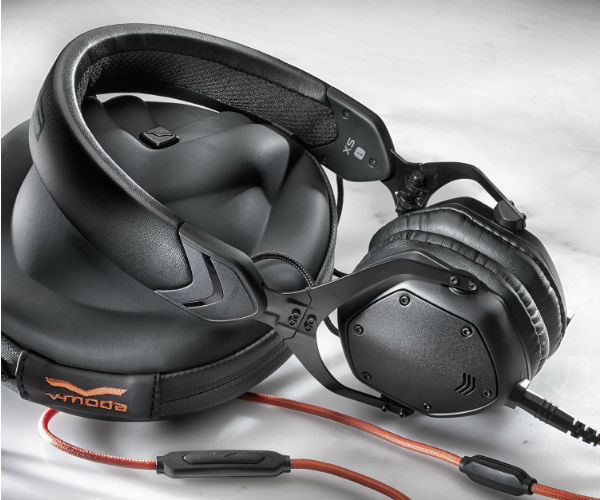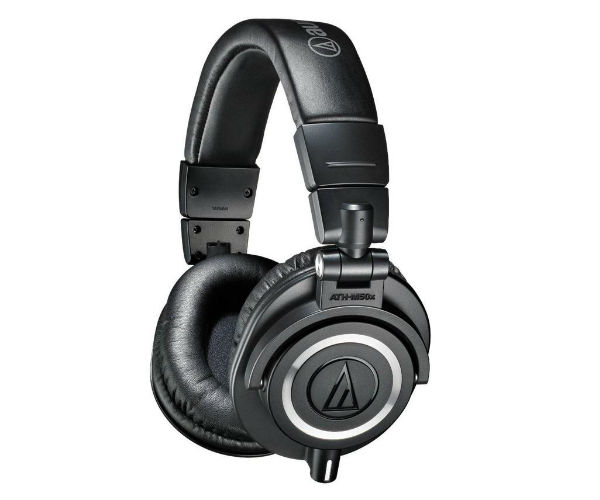As far back as I can remember, I have been an audioholic.
My earliest memory of testing speakers as a child involved "borrowing" ... and destroying my dad’s tower speakers. By age 15, I had gone through even more stereo systems. When I received my driver’s temps, my poor mom – she had the ugliest minivan ever made: a 1991 Pontiac Transport – had to sit in the passenger seat while I drove around and played the bassiest rap music I could find. That system was an amp and two 15" subwoofers, and I had installed everything.
In college, I worked as a car stereo installer, as well as designed and installed home theaters. Today, I am the guy that family and friends call for all of their computer or electronics needs. Many of my friends have kids in grade school or high school. I get asked the same questions like, "My son wants to get some Beats headphones for Christmas; are those any good?" or "My kid wants some new headphones, which ones are the best for your money?"
Before I tell you how I answer these questions, let’s see how the most popular and most advertised Beats headphones compare to their lesser known competition. In this round-up, I will compare the following headphones: the V-MODA M-100 Crossfade ($298.99), Beats Studio ($229.99), V-MODA XS ($199.99), Audio Technica ATH-M50x ($129.99-$149.99) and the Marshall Monitor ($119.99-$149.99). The prices listed are the current street prices, not the retail price, and they are the headphones newest versions or revisions.
Testing was done with an iPhone 6+ using iTunes with Apple lossless music files (ALAC). I compared the headphones with the same songs using the iPhone by itself, a Fiio E12 amplifier ($129) and one of the best portable Amp/DACs (Digital to Analog Converter) you can buy: the CEntrance M8 ($699, and yes, that’s a lot of money, but once you hear it, you will want it). All headphones had at least 50 hours of burn-in time. What I will be evaluating during this review is pretty straight forward: comfort, build quality, value and sound.
All of the headphones are designed to be used on the go with your phone and have the ability to make phone calls with their in-line microphones. The exception is the ATH-M50x, which is actually a professional studio monitor.
The iPhone 6 and 6+ have an excellent (noticeably better than previous generations) built-in DAC and a decent onboard amp. Your phone or iPod is all that most of you will ever use on these or any headphone/earphone that you buy; however, if you want to get the most out of them, an external amp or amp/DAC is the way to go. Once you try an external amp/DAC, it’s easy to hear why this is the case.
The Fiio E12 has more than enough power for the headphones tested. Simply, plug it into your phone’s headphone jack, strap it to your phone with the supplied band and you are set. The E12 directly amplifies the sound and has an optional bass boost.
If you want to amplify and noticeably improve sound quality, dynamics and soundstage, go with the CEntrance M8. By plugging in a short USB to Lightning cable, you bypass the iPhones Amp/DAC and use the M8s. If you are like me and have a variety of headphones and earphones, the M8 is well worth it.
Let’s get the review started with the most to least expensive (for help with some of the terms used in this review, here's a glossary):
1. V-MODA Crossfade M-100 ($289.99)
 The V-MODA M-100 has been out for a few years now and has been making waves from the start. It is an over-the-ear headphone, and after seeing it for the first time, I thought it looked small. If you have larger ears, you might find yourself tucking them inside the pad. The headphones apply the right amount of clamping force keeping them in place but still remaining comfortable on my head. The build quality is great; with a mix of metal and plastic, they have what I would call an industrial look that I very much like. As the most expensive headphone tested, I have high expectations. Let’s see how they sound.
The V-MODA M-100 has been out for a few years now and has been making waves from the start. It is an over-the-ear headphone, and after seeing it for the first time, I thought it looked small. If you have larger ears, you might find yourself tucking them inside the pad. The headphones apply the right amount of clamping force keeping them in place but still remaining comfortable on my head. The build quality is great; with a mix of metal and plastic, they have what I would call an industrial look that I very much like. As the most expensive headphone tested, I have high expectations. Let’s see how they sound.
Playing these right out of the iPhone 6+, the M-100s can get pretty loud on most songs with no distortion. The bass is what the M-100 is known for, and it’s definitely its strong suit. I found the mids and treble pretty flat to recessed at times, giving the M-100s a dark sound signature.
Having spent a lot of time with open-back headphones, the soundstage was at first a little closed in to my ears, but after comparing the M-100 to the rest in this test, they finished near the top. Now, time to plug the Fiio E12 into the phone and some power.
The difference in sound is immediate. With the E12, the sound gets less laid back with the extra muscle. The soundstage opens up a tad, and the bass is faster and really hits with authority. If you’re a bass head, the Fiio E12 is a must with these as the bass can hit as hard as you want – especially after you turn on the bass boost (too much bass for me).
If you want to hear how good these headphones can sound, you will need to step up to the CEntrance M8. With the M8, the sound stage opens up even more, and the sound is noticeably cleaner. There is more treble, and the vocals and mids move forward, taking some of the darkness away. The bass is still there with authority, and if you want more, the M8 has two boost positions for bass. I lost sleep with the M-100/M8 combo, always wanting to listen to just one more song.
After hearing these, they're a good value; once you start creeping into the $300 range, there are some other great headphones to consider. They have a fun sound and great build quality – though the bass might be a little too much for some.
All the athletes wear them; all the kids want them. What’s with all the hype? The Studios are the most expensive wired headphone in Beats' line-up and are the only adaptive noise cancelling headphones of the group. What that means is the ear cups contain microphones that generate noise to cancel out outside sound. It also means there is a battery that needs to stay charged or the headphones do not work. You will find out the hard way at least once – like I did – when you go to use them realizing you left the cable plugged in and the battery is dead.
The ear cup size is about the same as the M-100s so larger ears will have to be pushed in. They are made out of plastic with a minimalistic look that I like. They feel close to the same on my head as the M-100, except my ears touch the inner padding of the ear cup on the beats. This started to bother me during extended listening.
As for sound? The first thing you notice when you put these headphones on your head – before you even plug them into the phone – is a hiss. That is the biggest issue I have with the Beats. Yes, they have the best outside noise isolation of the group by a large margin, but the hiss of the adaptive noise cancellation is always there.
Once plugged into the iPhone, they get louder than any other headphone in the group and actually sound neutral to bright with recessed bass. This was surprising to me because I thought they would have the most low-end of the group. The soundstage is not as open, and there is less separation compared to both V-MODAs and the M50s.
Hooking up the E12 helps everything a little, and the bass heads will defiantly use the bass boost. When the bass does hit, it tends to spill over into the mids. The vocals are forward, but detail is lacking. With the CEntrance M8, things get a little more detailed, but the bass still spills over, and the soundstage still feels closed and congested. The end result was not what I expected in the bass department.
Everything else was OK sounding, but the constant hiss from the noise cancelling never goes away. Value based off of the competition is not good. I feel these should be priced closer to $150. I would price the Beats below the Audio Technica ATH-M50x if they didn’t have noise cancellation.
When I first saw the V-MODA XS, they looked tiny. The V-MODA XS is the only on-ear headphone of this shootout. The look and build quality are identical to the M-100, which is a plus, but the XS is obviously smaller. They are very comfortable on the head with memory foam pads applying the perfect amount of clamping force on my ears. They have the least amount of outside noise isolation of the group which is to be expected from an on-ear. But will smaller headphones bring smaller sound?
I assumed that the XS and the M-100 would sound similar with the M-100 having more bass and an overall fuller sound. With playing them on the iPhone, however, XS surprised me right from the start. The bass impact wasn’t as over powering as the M-100, but it was awesome bass for a sub $200 headphone. The XS and M-100 share the same dark sound signature, but I would say the XS is less laid back. Another way to put it would be the M-100 has more bass, but XS has quicker, more refined bass that I actually preferred over the M-100 on some songs. The M-100 had a slightly larger soundstage, but the XS has a tad more clarity.
I am amazed how good these little headphones sound using just the iPhone 6. The volume levels from the iPhone will satisfy most, but with the Fiio E12, everything improves with the added power. Stepping up to the CEntance M8, the XS sound great. The first song I heard with the M8 made me smile. I thought, "I can’t believe how good these little things sound." The M8 gives the XS a more detailed sound with more vocals and treble. The sound signature is still on the dark side, but I enjoy the XS M8 combo. Overall, the sound from the smallest headphones was better than I expected. At $200, it's a great value and sounds much better than expected.
The Audio Technica ATH-M50x has a huge following and is considered to be one of the best headphones for the money. You can buy it for $149.99, although it frequently goes on sale for $129.99. The ATH-M50x is the only headphone in the group not designed to play off a mobile device so it doesn’t have a cable with a built in mic. The ATH-M50x was designed to be a studio monitor, which are specifically designed for audio production applications – such as recording studios, radio studios and anywhere accurate audio reproduction is crucial. This means the sound signature should be neutral.
To me, the ATH-M50xs are the most comfortable headphone of the group with the largest internal ear cups. They look and feel somewhat cheap and flimsy, however, compared to the other headphones tested.
As for the sound quality, the iPhone 6 does a good job with the ATH-M50x. I expected the ATH-M50x, as a studio monitor, to be harder to drive than the others, but the volume got pretty loud with no distortion. The sound signature is the close to neutral, similar to the Beats, but they have a cleaner sound with a slight low end boost. The soundstage is the largest of the group, but it’s not approaching open-back headphone territory. The strong suit for the ATH-M50x is the clarity and detail with treble that’s not too bright and quick accurate bass.
The ATH-M50s have the best overall sound to work well for all genres and, as to be expected, things get better with amplification via the Fiio E12. Stepping up to the CEntrance M8, things sound really good, and – not to sound like a broken record – soundstage and clarity go up a notch as well. Overall, I love the sound you can get from a $130-$150 headphone. Like the M-100, I lost many hours of sleep listening to the ATH-M50x/M8 combo. The Audio Technica ATH-M50x lives up the hype: These are the best value of any headphone tested.
Marshall has been in the speaker amp business for 50 years. If you’ve ever been to a concert, the odds are you’ve seen a Marshall used for the guitar amps. Marshall now makes Bluetooth speakers, earphones and headphones – the Marshall Monitor being their over-the-ear flagship.
They were much smaller than I expected; as far as the over-the-ear part goes, these have the smallest ear cup other than the on-ear V-MODA XS. They took work to get my average size ear inside the pad. Other than that, the comfort is good, with the clamping force about average and build quality also good with a mix of metal and plastic. The ear pads are magnetic and can be easily removed to access a F.T.F (Felt Treble Filter). Let’s see how these stack up, being "technically" the cheapest when found on sale.
After plugging them into the iPhone, my initial impression was not the best. They sounded muffled with a narrow soundstage close to being claustrophobic. I then remembered the Monitors come with the F.T.F installed so I popped off the pads and removed them.
I didn’t think removing the F.T.F would make much of a difference – on paper, it is a slight change – but it helped quite a bit to my ears. I found the soundstage was still narrow, but the clarity and detail increased to be on par with the best tested. Many people say these have good to great bass. The bass goes very low and has great quality, but it doesn’t have the boosted bass quantity that I expected. In fact, sound signature for me was recessed bass with clear, forward mids/vocals. The treble was close to neutral.
As you would expect, the lacking bass gets help from the Fiio E12, and the bass boost might get switched on with these. Everything else gets better with the CEntrance M8, but I still found the soundstage a bit closed in. If you get these on sale for under $120, you get a headphone that has great detail and a unique sound signature. Interestingly, the Marshall Monitor had the biggest discrepancy of any other headphone tested. I had several people try all of the headphones, and the Monitor came out near or at the top for most. However, for the rest – especially those with large ears – it came out at or near the bottom. These would be a definite try before you buy headphone.
There is a headphone for everyone. If I didn’t say it enough in the review, they all sound great playing straight out of an iPhone 6; however, they all sounded noticeably better with external amplification. Remember, the iPhone 6 has one of the best amp/DAC combos for a phone. If you don’t own an iPhone 6, an external amp or amp/DAC might be a must to get the most out of any of these. With the exception of the studio monitor ATH-M50x, they all worked great making and receiving phone calls when hooked up to my phone.
I always recommend auditioning any headphone before you buy, but if you can’t here is a quick rundown of each headphone tested:
2. Beats Studio Wired Over-Ear Headphones ($229.99)

3. V-MODA XS ($199.98)

4. Audio Technica ATH-M50x ($129.99-$149.99)

5. Marshall Monitor ($119.99-149.99)

Conclusion



